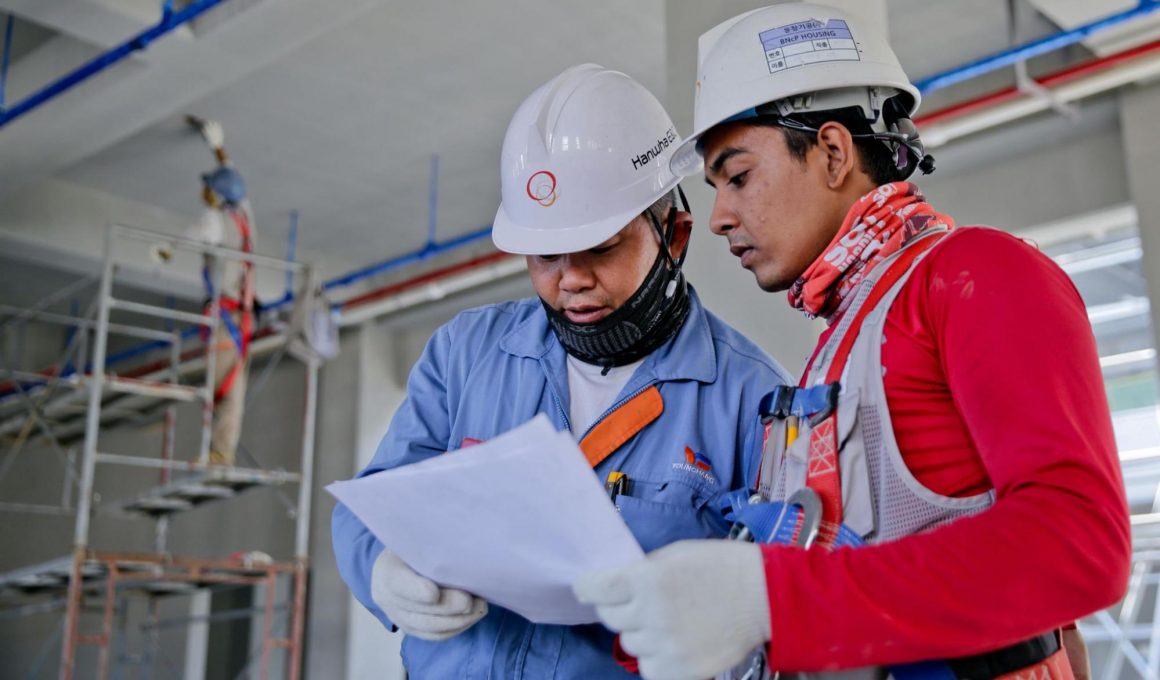Workwear Guru is reader-supported. When you buy through links on our site, we may earn an affiliate commission. Learn more
Workplace safety culture is paramount for professionals, especially those in the HVAC and construction industries. After all, the US Bureau of Labor Statistics reports that there are over 150,000 construction site accident injuries each year. But it is not just about wearing the right gear but about fostering a mindset where safety is a top priority. But what exactly is safety culture?
Simply put, it is the shared values, beliefs, and behaviors regarding safety in a workplace. With a strong safety culture, there will be fewer accidents, increased productivity, and better employee morale. A 2023 Work Survey in America can attest to this: 77% of workers express satisfaction with the mental health and well-being support they receive from their employers.
The Role of Online Strategies in Workplace Safety Culture
Online strategies are crucial in shaping workplace safety culture in today’s digital age. These strategies go beyond traditional methods, offering innovative ways to engage employees and reinforce safety practices.
One example is online safety training modules, which allow employees to access training materials at their convenience, reinforcing important safety protocols and ensuring consistent understanding across the organization. Companies can create a more robust safety culture by complementing traditional safety measures with digital tools.
Utilizing Digital Platforms for Safety Communication
Effective communication is key to promoting a safety culture in the workplace. Digital platforms provide convenient channels for sharing safety information, and reaching employees across various locations and shifts. Examples of such platforms include:
- Intranet Portals: Companies like Boeing have implemented comprehensive intranet portals for safety. Boeing’s Safety Information Management System (SIMS) is a centralized platform where employees can access safety manuals, incident reports, and safety training materials.
- Messaging Apps: The construction company DPR Construction utilizes messaging apps like WhatsApp for real-time safety communication among its workforce. DPR’s safety supervisors create dedicated WhatsApp groups for each construction site, sharing safety alerts, conducting toolbox talks, and addressing safety concerns that workers raise.
- Email Newsletters: General Electric (GE) utilizes email newsletters to disseminate safety information to its employees worldwide. GE’s monthly safety newsletter, “Safety Matters” provides employees with updates on safety policies, best practices, and success stories from various GE facilities.
Online Training and Education
Training and education are fundamental in cultivating a safety-conscious workforce. Online training programs offer flexibility and accessibility, allowing employees to enhance their safety awareness and skills at their own pace.
From interactive modules to virtual simulations, these programs provide engaging learning experiences that can significantly contribute to a strong safety culture. They can even give insights on how to choose the best construction shoes.

Engaging Employees Through Digital Platforms
Engaging employees is crucial for sustaining a safety culture. Digital platforms offer various ways to encourage participation, such as feedback surveys, online suggestion boxes, and gamification. By involving employees in safety initiatives and decision-making processes, companies can empower them to take ownership of their safety and contribute to a safer work environment.
Leadership and Online Safety Initiatives
By championing safety initiatives and leading by example, leaders set the tone for the entire organization. Through online platforms, leaders can communicate safety expectations, provide resources, and demonstrate their commitment to safety, inspiring employees to prioritize safety daily. Those in leadership positions can enhance their capabilities and qualifications through even the shortest online MBA programs.
Measuring and Improving Online Safety Strategies
Measuring the effectiveness of online safety strategies is essential for continuous improvement. To gauge the impact of these strategies and identify areas for enhancement, companies can track key performance indicators (KPIs) tailored to their specific goals and objectives.
Some key performance indicators for measuring and improving online safety strategies include:
- Training Completion Rates: Monitor the percentage of employees who complete online safety training modules within the specified timeframe. Workplaces can also complement this with practical tests to see whether employees know how to conduct equipment maintenance, such as cleaning leather gloves.
- Safety Knowledge Assessment Scores: Assess employees’ understanding of safety protocols and procedures through knowledge assessments included in online training programs. Monitoring average assessment scores over time helps identify areas where additional training or reinforcement may be needed.
- Incident Reporting Trends: Track the number of safety incidents reported through online reporting systems or incident management platforms. Analyzing trends in incident reporting can reveal areas of high risk or recurring safety issues that require targeted intervention or further training.
- Employee Feedback and Surveys: Regularly solicit employee feedback through online surveys or feedback forms to gauge their perception of safety culture and the effectiveness of online safety initiatives. Pay attention to trends in employee feedback to identify areas for improvement and address any concerns or suggestions raised by employees. Moreover, employers can use this form of engagement to determine their employees’ mental health status. In this way, they can help their employees through their concerns to prevent worker suicide.
- Compliance with Safety Protocols: Monitor adherence to safety protocols and procedures outlined in online training materials or communicated through digital platforms. Compliance metrics, such as the percentage of employees following proper safety procedures during routine tasks, provide insights into training effectiveness and the overall safety culture.
By tracking these key performance indicators, companies can measure the effectiveness of their online safety strategies and identify opportunities for improvement.
Empowering Safety
Leveraging online strategies is indispensable for building a safety culture in various industries like HVAC and construction. Companies can strengthen their safety culture and create safer workplaces by embracing digital platforms for communication, training, engagement, and leadership initiatives.
As you continue your journey in the HVAC field, remember to harness the power of digital tools to enhance workplace safety culture and protect yourself and your colleagues from harm. Stay safe out there!









